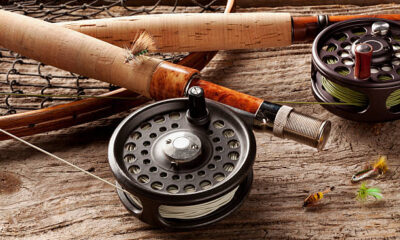
Contributed by Mike Moore, Tines and Trails

There’s something sacred about returning to the woods after a long Michigan winter. The snow is gone, the air smells of damp earth and thawing leaves, and the forest hums with the quiet pulse of renewal. For many, spring means fishing trips or turkey hunts—but for dedicated whitetail hunters, it marks the start of a new season altogether.
A Season Without a Shot, But Full of Purpose
Spring isn’t about pulling the trigger. It’s about preparation. Every fallen limb you clear, every stand you check, and every trail camera you strap to a tree is an investment in your fall hunt.
Storm-damaged trails get cleaned up. Tree stands are inspected—some might only need a new strap, while others need a full rebuild or relocation. Trail cameras are put back in place, offering insight into early patterns as deer shift into their warm-weather routines. And if you’re lucky, you might stumble on a shed antler or two—small trophies that tell a big story about which bucks survived the winter.
Spring Scouting: Honest Time in the Timber
Without the pressure of a ticking clock or an approaching opener, spring scouting brings a different kind of peace. It’s a time to simply observe. Fresh tracks in the mud, early rubs on saplings, and well-worn trails leading to feeding areas are all clues waiting to be decoded. It’s quiet work—slow and deliberate—but it’s also some of the most honest and informative time you’ll ever spend in the woods.
This groundwork is what separates a lucky hunt from a consistent season. Success in November often comes down to the quiet steps taken in March, April, and May.
The Power of Food Plots
One of the most effective spring chores you can tackle is planting and maintaining food plots. Whether you’ve got an acre or just a few hundred square feet, a well-prepped food plot can transform your hunting property into a reliable destination for deer throughout the year.
Here are some tips to make your food plots count:
Food Plot Tips for Spring Success
1. Start with a Soil Test
Before you drop a single seed, know what you’re working with. A basic soil test will tell you the pH and nutrient levels of your soil, allowing you to amend it properly with lime and fertilizer. Skipping this step is like trying to train a dog without knowing its name—inefficient and frustrating.
2. Control Weeds Early
Weeds are your food plot’s worst enemy. Use a non-selective herbicide weeks before planting to knock down early growth. Continue mowing throughout the summer to prevent invasive grasses and broadleaf weeds from overtaking your plot.
3. Mind Your Planting Depth
Seed size matters. Tiny seeds like clover and chicory need to be planted shallow—no more than 1/4 inch deep. A simple drag with a chain harrow or even a lawn roller can help press seeds into the soil without burying them.
4. Fertilize and Lime According to Need
Use your soil test results as a guide. Don’t guess when it comes to nutrients—different plant species require different levels of nitrogen, phosphorus, and potassium. Lime may take time to adjust pH, so apply it early in the season.
5. Plant with Rain in Mind
Mother Nature is your partner. Watch the forecast and plan your planting right before a decent rain window. Moisture is critical for seed germination, and even the best-prepped plot won’t take off without it.
Looking Ahead
The most successful deer seasons aren’t built in October—they’re built in the off-season. Every bit of effort you put in now, from scouting and clearing trails to planting food plots, pays dividends when the rut rolls around.
Kara Raeth is the DMM Service Lead at CatchMark Technologies, bringing over 15 years of experience in web development, customer service, and project management. She joined the company in 2019 as a Web Developer and has since expanded her role to include office management, accounts receivable and payable, and project management. Kara proudly served in the U.S. Army, where she specialized in signal and communication intelligence—developing a strong foundation in secure communication and technical systems. Her combined military background and digital expertise make her a vital asset to CatchMark’s digital marketing and media operations.
Must See
-


History
/ 13 hours agoWhite Lake History – Parades Through Time
The Tradition of Parades Parades have been a part of human celebration for thousands...
By Owen Raeth -


Community
/ 1 day agoCity of Whitehall Police Department Incident Report Summary Report Period: June 4 – June 17, 2025
Overview:Between June 4 and June 17, 2025, officers from the City of Whitehall Police...
By Kara Raeth -


Uncategorized
/ 2 days agoElectric Forest: A Journey Into the Heart of Rothbury, Michigan
What is Electric Forest? Electric Forest is a four‑day immersive music and arts festival...
By Kara Raeth
















